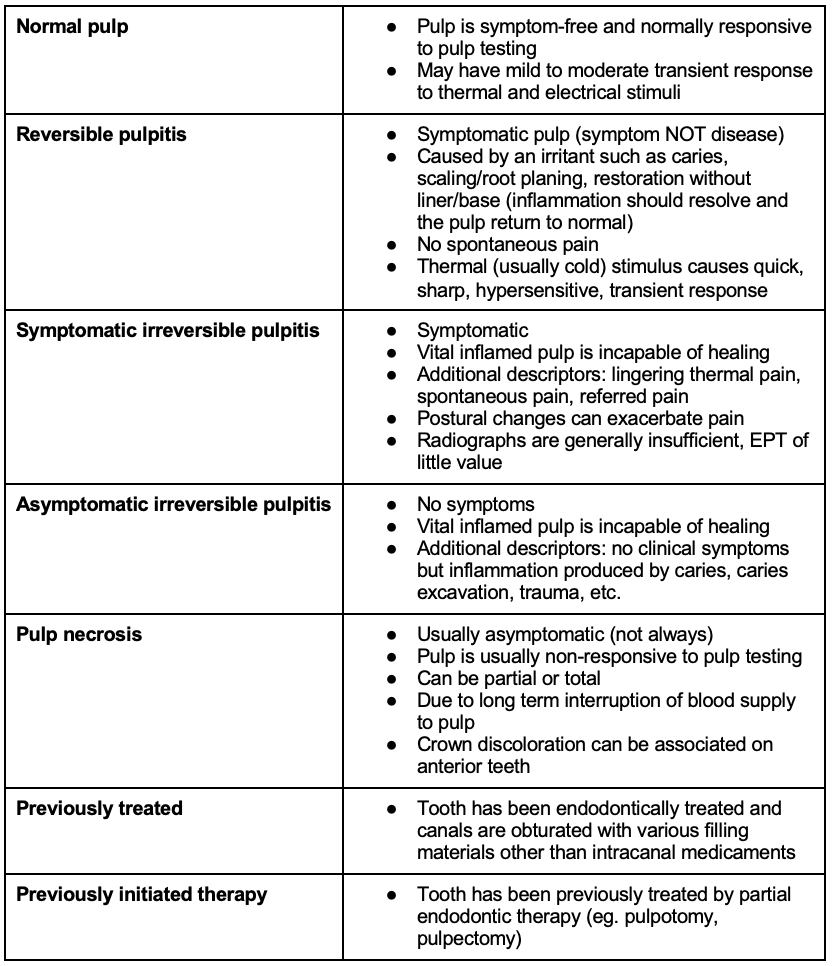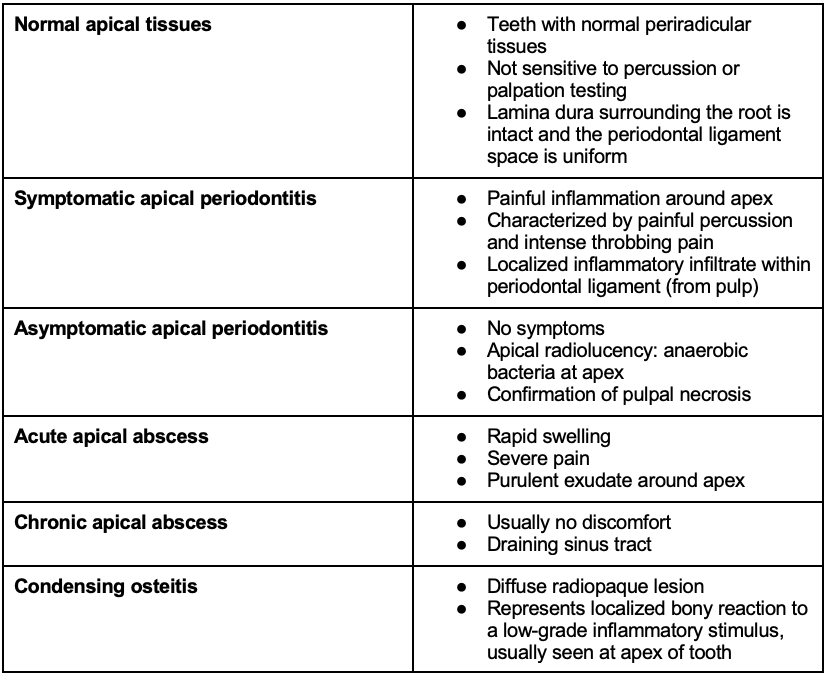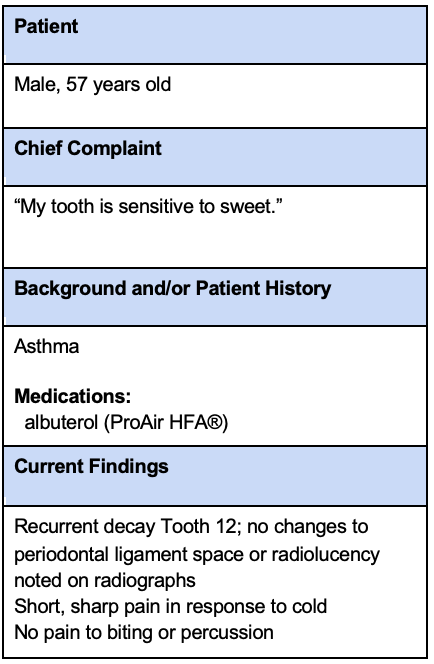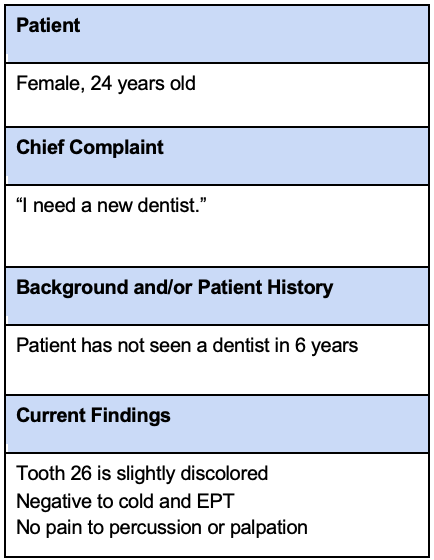Endodontic Diagnoses to Know for the INBDE
An endodontic diagnosis has two components: pulpal and periapical.
The following is a list of possible pulpal diagnoses and how they are defined by pulpal symptoms and findings. Thermal testing provides a lot of pulpal diagnosis information.

The following is a list of possible periapical diagnoses and how they are defined by periapical symptoms and findings.

Here are two examples of how questions relating to these concepts may be presented on the INBDE:
Example Case 1


What are the pulpal and periapical diagnoses in this case?
Where do we start?
Each tooth needs a pulpal and periapical diagnosis.
The pulpal diagnosis is made through testing the status of the pulp. This can be done by using one or all of the following tools: a thorough history, cold test, and electric pulp test (EPT).
This patient presents with a history of transient pain. The pain is in response to sweetness. This pain is not described as lingering. We are able to replicate this with a cold test, which results in a short, sharp pain. This supports a diagnosis of reversible pulpitis. This is a clinical diagnosis based on findings indicating that the inflammation should resolve and the pulp return to normal when the irritant is removed. The patient has caries approximating the pulp on tooth 12 leading to the symptoms and findings.
We can then move on to determining the periapical diagnosis for this case. This diagnosis can be made through use of percussion, palpation, and radiographic findings.
In this case, the tooth has no pain on percussion. We do not see widening of the PDL in the radiograph. The alveolar bone looks normal and the lamina dura appears intact. This supports a diagnosis of normal apical tissues.
Answer: This patient is presenting with reversible pulpitis with normal apical tissues.
Example Case 2


What are the pulpal and periapical diagnoses for this patient?
The pulp in this case is nonresponsive to cold and EPT, which is consistent with death of the pulp. The patient is not presenting with a history of pain. This history, along with the clinical tests, lead to the diagnosis of pulpal necrosis.
The radiograph shows a periapical radiolucency associated with tooth 26. There is no pain on percussion or palpation. This supports a periapical diagnosis of asymptomatic apical periodontitis, which is inflammation and destruction of apical periodontium that is of pulpal origin. It appears as an apical radiolucent area that does not produce clinical symptoms.
Answer: This patient is presenting with pulpal necrosis and asymptomatic apical periodontitis.
Get everything you need in one place. Start studying today for free.

















